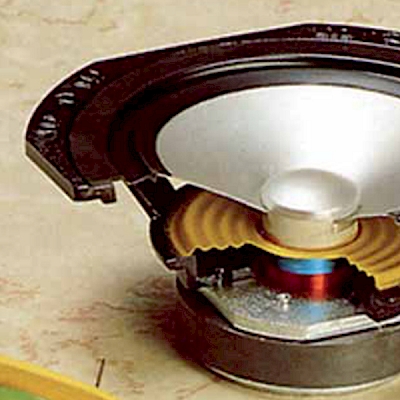If we are talking about high fidelity of reproduction in acoustic systems, we have to admit that many technical solutions are a compromise between the efficiency of the system and the ability to accurately reproduce recorded sound. At the same time, there are manufacturers who are not only satisfied with the successful use of obvious design approaches, but also use their own developments to overcome the existing limitations of high fidelity.

The British company Monitor Audio is known as one of such manufacturers. On the account of the British at once several technologies that allow to radically increase the quality of sound reproduction, while not sacrificing efficiency. I consider Monitor Audio speakers to be one of the most technologically advanced in the world and, perhaps, the most innovative among similar devices from European manufacturers. An impressive portion of innovation and technology relates to diffuser materials. Under the cat, we are talking about these technologies and properties that can be obtained through their application.
C-CAM - cermets for diffusers
C-CAM is a ceramic-metal diffuser manufacturing technology developed by Monitor Audio in the 80s of the 20th century and improved over the next 30 years. It is used in the company's products to this day and has no exact analogues. It all started with the fact that in 1988 the task for designers and technologists was to develop an RF emitter with a frequency of the first resonance far beyond the frequencies that a person is able to hear.
For this, it was decided to use the company's metal tweeters, which consisted of an aluminum-magnesium alloy. They decided to cover them with a ceramic layer, about 50 microns thick. The metal diffuser went through the process of removing the residual voltage, and after that, anodizing creates an external ceramic layer.
Thus, the diffuser was resistant to deformation, bending, and resonances in the audible frequency spectrum. The frequency of the first resonance was moved to the region of 35 kHz. Also, the stiffness of the radiating surface ensured a smooth transition characteristic, which subjectively manifested itself in the exact transmission of frequencies, i.e. a sense of realistic sounding of the high-frequency spectrum. The golden color of the tweeters and the name Gold Metal Dome (later the Gold Dome C-CAM) gave rise to the legend that gold was used in the production, in fact this is just a common myth.
Having mastered the production of tweeters using the new technology, the company's engineers decided to apply it also to the midrange and woofers. The result was impressive. The experimental diffusers were not inferior, but often superior to cellulose, polymer and textile samples. Marketers have developed a new brand - C-CAM, the name by which these speakers are known today.
Rigid Surface Technology - origami for the diffuser
RST (Rigid Surface Technology) is a relatively new technology that allowed reducing the thickness of metal diffusers without decreasing their strength, as well as increasing sound pressure while maintaining low distortion, antiresonance properties and low propagation of standing waves.

The principle that was used by the engineers was borrowed from Japanese origami art. Small hemispherical dents are applied to the speaker’s metal diffuser, the diameter of which increases from the center to the periphery. In this way, additional stiffening ribs are created that provide strength, and, accordingly, without significant losses in fidelity of reproduction, the maximum amplitude of the diffuser increases, which means the volume.
According to stereo.ru, the highest non-linear distortion coefficient of such speakers during the Monitor Audio Silver RX 6 test, noted in the resonant peak at a frequency of 2 kHz at a critical mode at maximum volume, did not exceed 4%. The total SOI is significantly lower and is in the range of 0.4 - 0.5% in almost the entire spectrum of reproducible frequencies.
MMP (Metal Matrix Polymer)
MMP is a technology released in 2003 as an alternative to C-CAM. It is a production of a metal-polymer diffuser by the melting of metal particles into polypropylene under high pressure.
According to some experts, despite the low cost, it is almost not inferior to C-CAM in antiresonance properties and sound pressure. Successfully used in speakers for low-cost Monitor Audio speakers.
RDT: and again composites
RDT (Rigid Diaphragm Technology) appeared several years ago and is used in the flagship Platinum series. A successful attempt to create a heavy-duty, very thin and yet damped diffuser.
The essence of the technology is that, using anodizing, a cermet layer is applied to the cellular structure of the Nomex polymer material, which consists of strong fibers. Thus, it is possible to reduce the thickness of the diffuser to 40 microns (200 in C-CAM), reduce the weight and at the same time increase the strength by 150 times. The technology can be used for both HF and MF, LF emitters and guarantees high volume, speaker operation in piston mode with minimal distortion and an imperceptible resonant factor.
Total
In addition to the described technological technologies associated with diffusers, the Monitor Audio piggy bank has a lot of advanced solutions for its time, such as using a special design of phase inverter pipes to prevent turbulent phenomena and time delays, and much more. I hope the descriptions of the technologies that are used by the company are clear enough and will be useful for those who opted for Monitor Audio. I will be subjective in the assessment, in my opinion, the Monitor Audio Silver series is one of the best lines in the market in terms of price-quality ratio and one of the most high-tech in terms of ensuring high fidelity of playback.
Traditional ad unit
Our catalog contains many high fidelity loudspeakers, including Monitor Audio. We also created a special page on which you can familiarize yourself with the assortment of the company in detail.